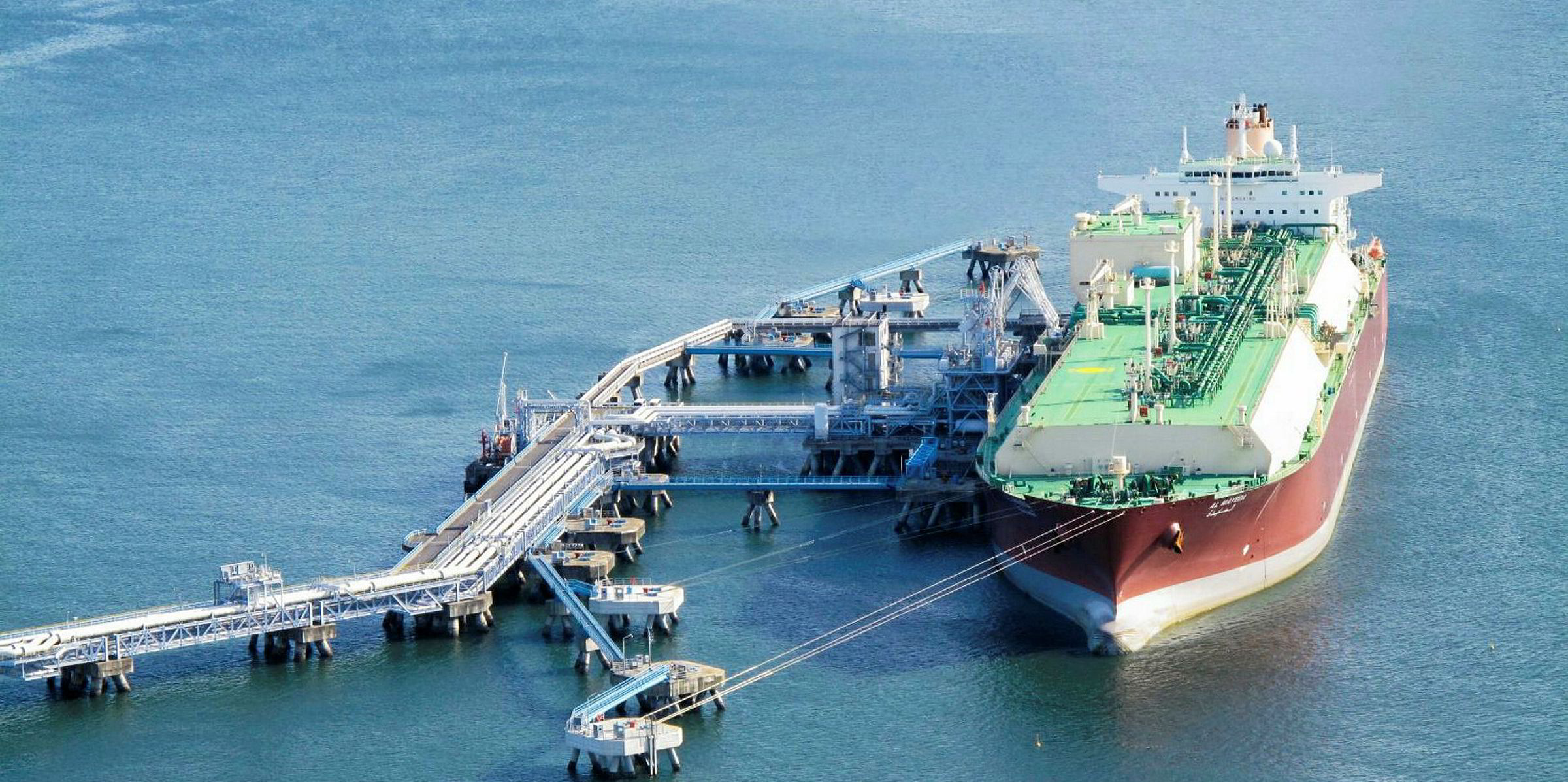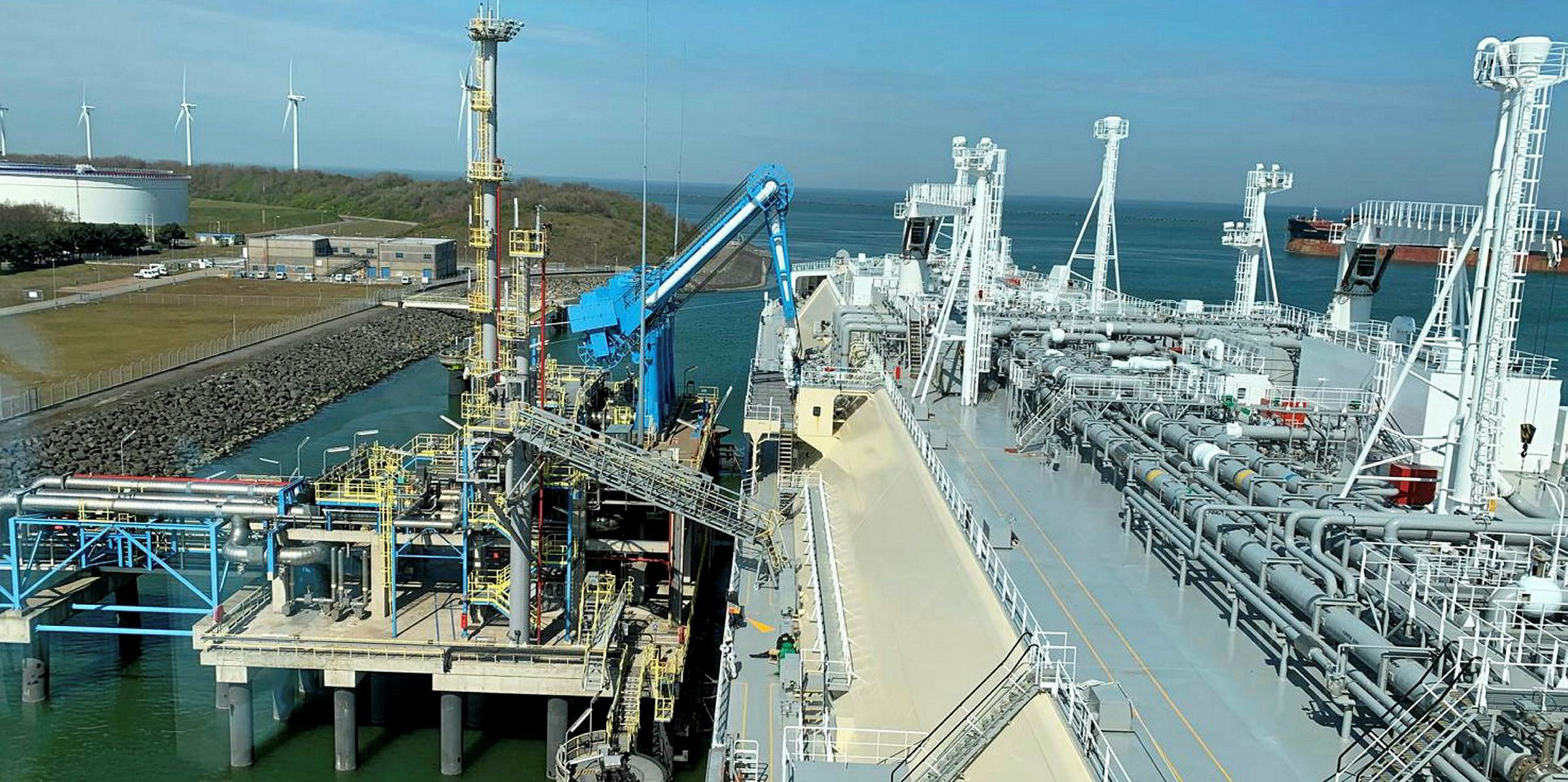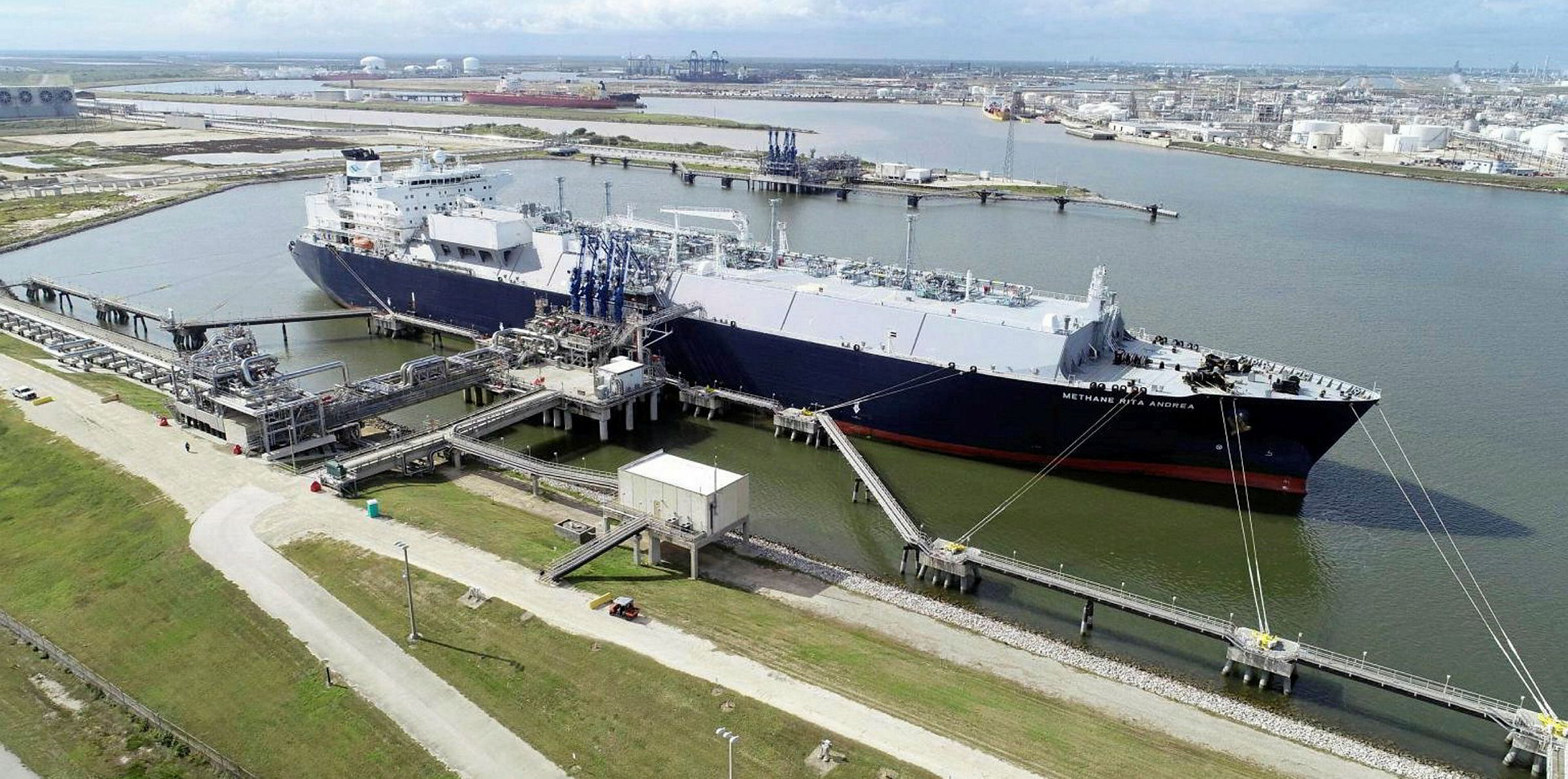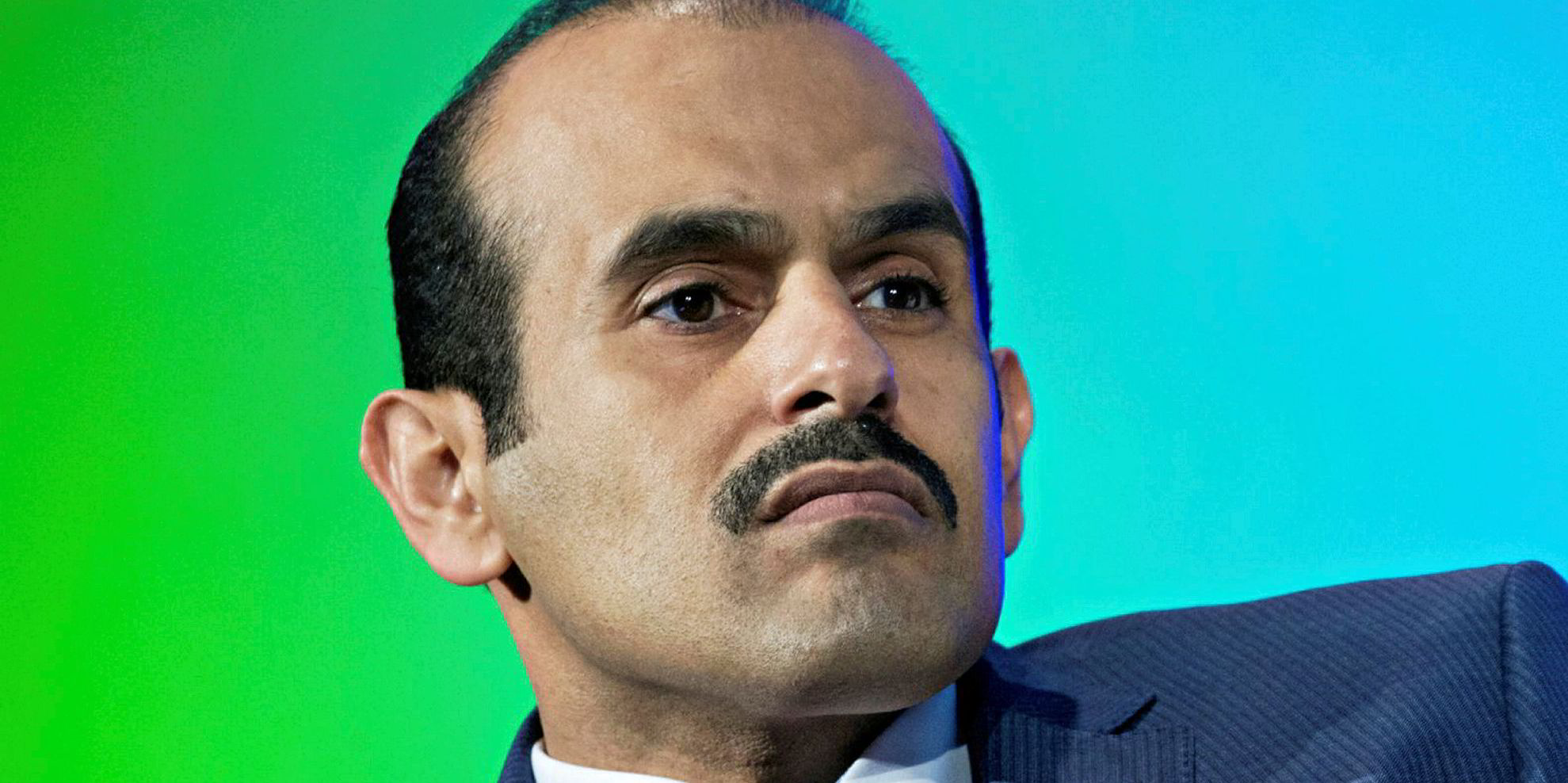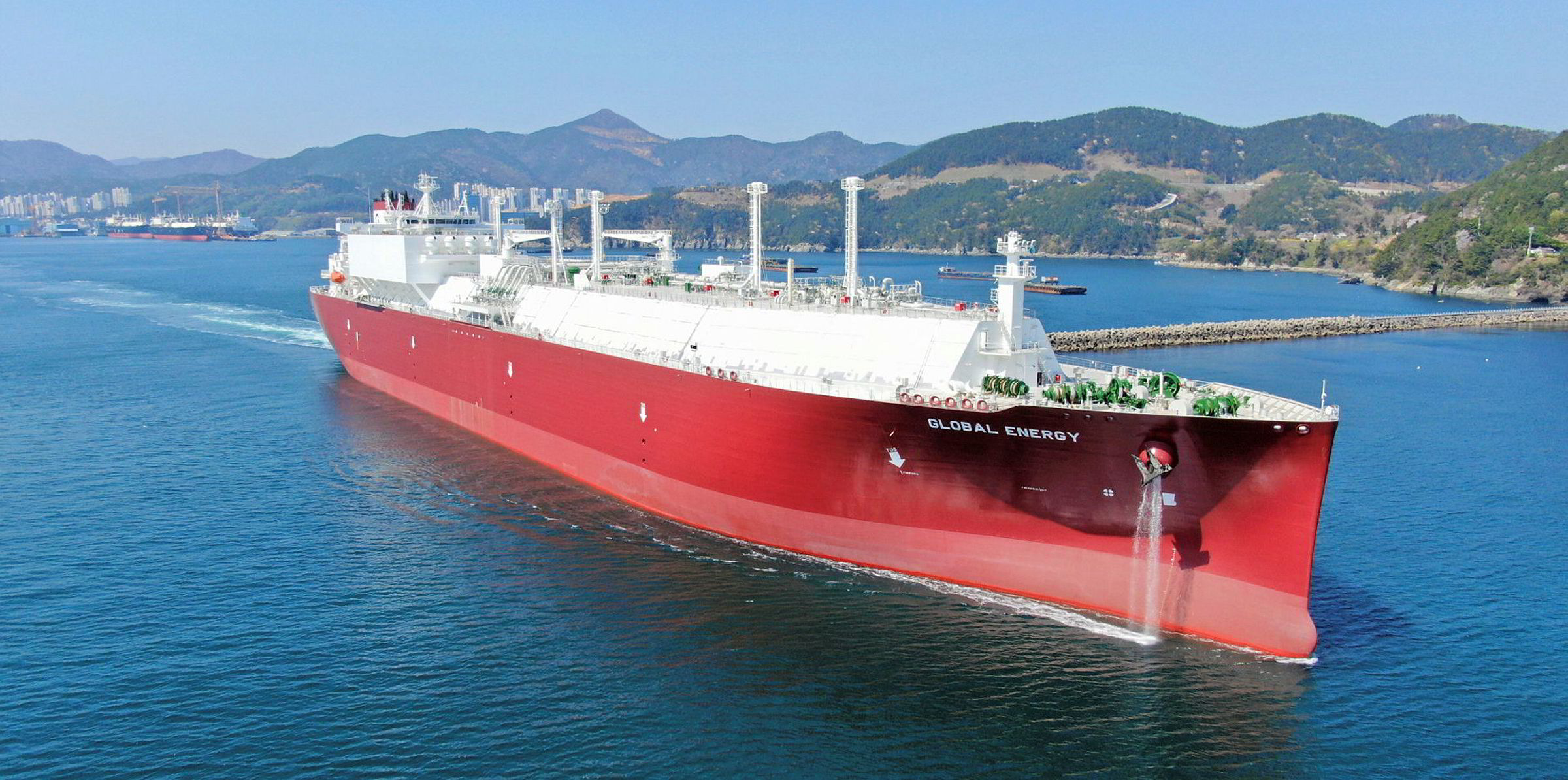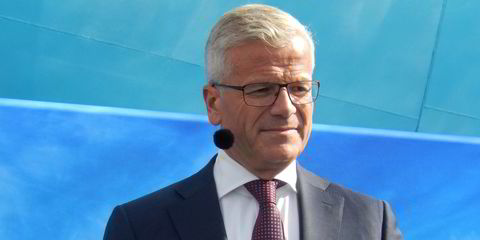Floating storage of LNG is ramping up worldwide to record levels but is not moving freight rates, according to Poten & Partners.
Speaking in a webinar, global head of business intelligence Jason Feer said Poten — which measures floating storage as the volume of LNG at sea compared to typical monthly demand — is seeing floating storage at 58% of a typical month and rising.
Feer said this equates to the high floating storage peaks seen in the winters of 2018 and 2019, with the record being at about 61%.
Adjusted seasonally, he said the current LNG floating storage is at 60% to 61% — but he insisted this is not impacting freight rates.
Bearish sign
“We are really starting to see a significant accumulation of volume,” Feer said.
“I think that is a pretty bearish sign for winter,” he added, as it signals the volume of LNG that will be available.
Feer said the average LNG fleet speed has also fallen “very sharply” to below 13 knots, which he said is an indication that more companies are using slow steaming to manage their supply chains.
Feer said Poten sees more than 40 US LNG cargoes as cancelled for August. He said this equates to half or more of US export capacity.
“That’s a very significant impact on US exports,” he said.
Poten expects US cargo cancellations for September before the market becomes more balanced.
Feer said the market is starting to see “post-Covid” falls in LNG demand for countries, both as a result of the decline in their economic activity and export markets.
Hussle
He said producers outside the US, such as Australia, Indonesia, Malaysia and Nigeria, are being affected and trimming their export, with Qatar being the exception.
“On the supply side, there is a very clear response from most of the producers in the world,” Feer said. “The odd man out really is Qatar.”
Since April, Qatar’s LNG exports have risen sharply to above the levels recorded for the previous two years.
Feer said Qatar has said it has no intention of shutting in its production so has had to “hussle” to find homes for its volumes.
He described Qatar as “a very enthusiastic user of floating storage” both at its load and discharge ports.
In a change in tactics, he said, Qatar has also competed “very aggressively” in the global spot markets on pricing.
By maintaining volume, he said they are holding onto market share and pushing out other spot supply, like the US.
“They’ve really used their heft in the market to keep their market share and maintain output,” Feer said.
Oleg Vukmanovic, Poten's head of business intelligence for Europe, Africa and the Atlantic, highlighted that north-west Europe has seen a dramatic drop in LNG imports from May as prices hit a record low and traders diverted cargoes east. This trend accelerated into June.
Vukmanovic said buyers in the Mediterranean have been using cheap LNG instead of oil-indexed pipeline gas and Turkey has been particularly active.
He said creativity with gas storage injections into Ukraine means that European terminals may not hit capacity until September, when previously the forecast was August.
Poten expects 2020 to be a “difficult year” for LNG, with a loss of five to six million tonnes of demand, Feer said.
But the broker and consultant sees demand growth led by South East Asia, China, India returning next year, boosting the market by nine to 10 million tonnes to 367 million tonnes, with a similar growth projection for 2022.
